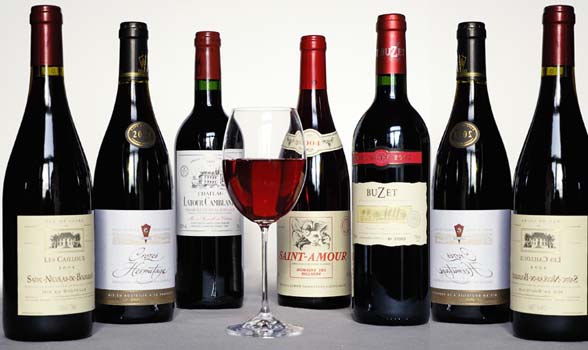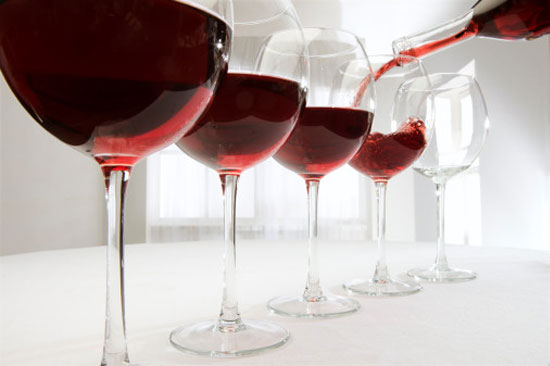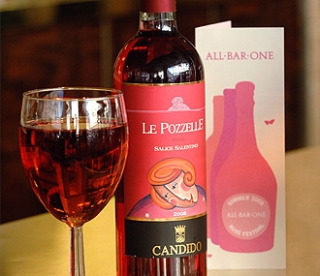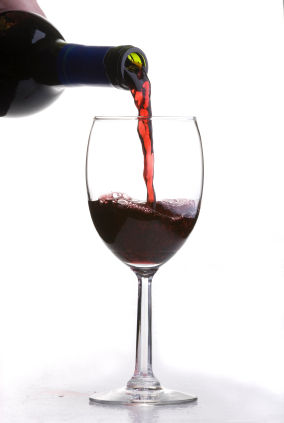All about WINES
Wine is an alcoholic beverage made from fermented fruit juice, usually that of grapes. The natural chemical balance of grapes lets them ferment without the addition of sugars, acids, enzymes, water, or other nutrients. Yeast consumes the sugars in the grapes and converts them into alcohol. Different varieties of grapes and strains of yeasts produce different types of wine. The well-known variations result from the very complex interactions between the biochemical development of the fruit, reactions involved in fermentation, and human intervention in the overall process. The final product may contain tens of thousands of chemical compounds in amounts varying from a few percent to a few parts per billion.

Wines made from other fruits are usually named after the fruit from which they are produced (for example, apple wine and elderberry wine) and are generically called fruit wine. The term "wine" can also refer to the higher alcohol content of starch-fermented or fortified beverages such as barley wine, sake, and ginger wine.
Types of Wine
Wines can be grouped into the six primary categories: white wines, red wines, rosé wines, sparkling wines, dessert wines and fortified wines.
- White wines are wines that contain little or no red pigmentation. These wines are almost always made from white grapes, but can be made from black grapes as well. Winemakers can make white wine from black grapes because the juice in most black grapes is actually clear. White wines can be sweet or dry, or somewhere in between. Popular white wines include Chardonnay, Pinot Grigio / Pinot Gris, Riesling and Sauvignon Blanc.
- Red wines are made from black grapes and have a red or blue tint. Most grapes have colorless juice, so to make red wine the grape skins, which contain nearly all of the grapes’ pigmentation, have to remain intact with the juice during all or part of the fermentation process. Tannins are also found in the grape skins, and are transferred into the wine while the skins are in contact with the juice. Besides the difference in color, the primary difference between red and white wines comes are tannins. Found mainly in red wines, they provide a dry, puckery sensation in the mouth and in the back of the throat. They also help preserve wine, allowing most (but not all) red wines to be aged longer than white wines. Popular red wines include Beaujolais, Cabernet Sauvignon, Chianti, Merlot, Pinot Noir and Zinfandel.

- Rosé wines are pink in color, and can be referred to as rosé, pink or blush wines. Rosés are made from black grapes, but don’t fully turn red because the grape skins are removed from the juice mere hours after contact. This brief contact with the grape skins gives the wine a pink color from the slight transference of red pigments from the skins. Rosés can also made by blending together white and red wines. This brief skin contact also ensures that a minimal amount of tannins enters the wine. Many rosés are sweet, with White Merlot and White Zinfandel serving as great examples. However, the best and most traditional European rosés are bone dry.

- Sparkling wines, made from nearly any variety of grape, are wines that contain carbon dioxide bubbles. Carbon dioxide occurs naturally during fermentation, and winemakers around the world have developed special techniques to trap carbon dioxide in the wine. Sparkling wines are often referred to incorrectly as Champagne – Champagne is a type of sparkling wine, but there is a distinct difference between the two. Champagne is the name of a region in northeast France. By law, wines may only be called Champagne when they are made solely from grapes grown in the Champagne region and produced according to strict guidelines. Popular sparkling wines include Cava, Champagne, Crémant d’Alsace, Moscato d’Asti and Prosecco.
- Dessert wines are wines which have a high sugar content, making them a popular choice with or as dessert. 0054hey can be made sweet from many different ways, such as harvesting the grapes very late when sugar levels are high or drying the grapes on straw mats to concentrate the sugars.

- Others, including fortified wines, have Brandy or other spirits added to the juice during fermentation. The Brandy prematurely stops the fermentation process, thus leaving a high amount of sugar in the wine. Some fortified wines, including Port and Sherry, were originally designed to ensure the wine survived long voyages on 17th century ships. Popular dessert wines include ice wines, late harvest Rieslings, Madeira, Port, Sherry and Sauternes.
- Galliano liqueur wine (15/07/2013)
- Baileys (10/07/2013)
- Vin de liqueur (30/06/2013)
- Sweet Wines 101 (04/01/2013)
- Red wine helps digestion (21/12/2012)
- Sparkling wine (18/12/2012)
- How To Preserve Wine (18/10/2012)





